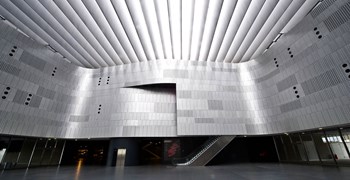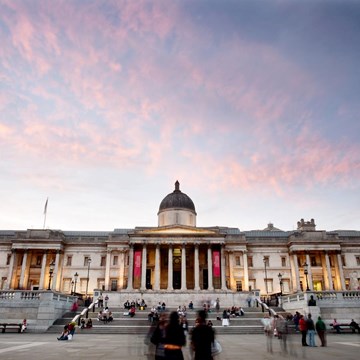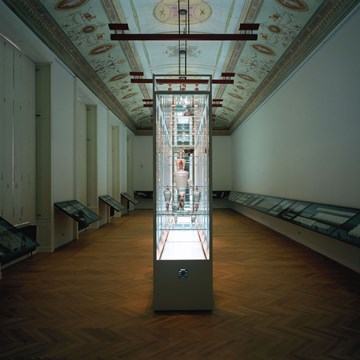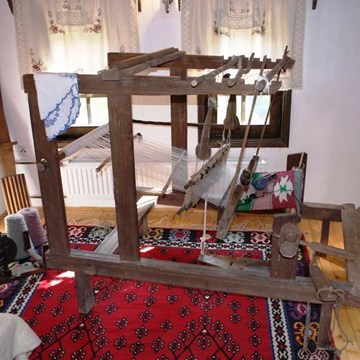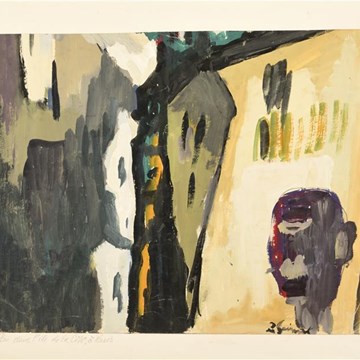CROSSROADS. Italy-USA Intersections, from After the War to the Postwar Economic Boom
The revolution of the Beat Generation poets and the glamour of Hollywood stars, Italian realism and the colossal sets of Cinecittà, the explosion of colors of Pop Art and the ritual of Carosello, the lavish size of American cars of the '50s and the attention of the Made in Italy line. Between Cadillac and the historic Lancia, photographs and films, artwork and posters, from March 29 to June 25, 2017, the Museo Nazionale dell’Automobile di Torino (MAUTO) will present the new exhibition "CROSSROADS. Italy-USA Intersections, from After the War to the Postwar Economic Boom," through the artistic curatorship of Luca Beatrice and Rodolfo Gaffino Rossi (technical director of MAUTO) and the patronage of the Consulate General of the United States in Milan.
The retrospective recounts and compares the socio-cultural context in Italy to that in America, between the end of World War II and the ‘60s that enhanced the cross-pollination between art and Car Design. What influences guided the hands of our designers of the esteemed four wheels in the golden years of automotive development? And what contributions did our country give to the evolution of the language of design overseas?
The exhibition is conceived as a journey into the splendor of the visual, musical and cinematic touches with references to those authors and artists who have depicted the historical imagination of the most revolutionary era of the twentieth-century, from Andy Warhol to Roy Lichtenstein, from Mimmo Rotella to Mario Schifano, Bert Stein and Tazio Secchiaroli. The exhibition opens with the unmistakable style of the Lincoln Continental, the 1961 sedan from the luxurious line whose history is intertwined with that of presidents and businessmen. The exhibition then follows the development of three main thematic areas - On the Road vs. La Strada, Cinecittà and Hollywood, Dive & Latin Lover - ranging from cinema and literature to painting and photography. These were the years of Jack Kerouac and Allen Ginsberg and art that exaggerated and distorted the symbols of consumerism and the myth of the City of Angels. It was also the moment television and advertising crept into houses, like a window to the world and sent out images of a nascent American counterculture that stood in stark contrast to an Italy that was starting to raising itself up again after the tragedy of war. The narrative of open landscapes in the eyes of young Americans met the issue of reconstruction and the myth of the industrial city, the realism of the suburbs and Pier Paolo Pasolini, the pin-up and James Dean.
The retrospective continues in an area dedicated to cars, displaying the Buick and Plymouth, Fiat and Alfa Romeo of yesteryear, that develops the comparative narrative between the socio-cultural contexts that both Italian and American car designers took inspiration from. On the one hand, the eclectic creativity of Italian design that had a pacifying influence on an American style intent on exaggerating volumes and taking forms to their extremes; discreet, clean, soft lines moderated the angular exaggerations of American cars from their enormous tails and excessive grills. On the other hand, the American school, led by Harley Earl of General Motors and Virgil Exner of Chrysler, found its maximum expression through the strengthening of the balance between style and technology, transforming the craftsmanship modeling of Italian workshops into systematic and technological design. There were, in fact, many Italians who moved to the US to hone their skills in technology, from Giovanni Savonuzzi to Giovanni Michelotti, from Mario Revelli di Beaumont to Battista Pininfarina.
Thirteen cars will be on exhibition illustrating these two close, yet distant worlds; each of which enriched the creative dialogue of the other. Sedans and convertibles, symbols of the American dream and film stars of that era, with their extravagant colors and prominent features, alongside the small and elegant "jewels" produced by Italian automakers that demonstrated how in the years of the economic boom, the art of Italian car design, in one of its most fertile periods, came to be a renowned "school" which set the standards of global automotive design. The special guest of the opening night is a 1937 Packard Super-Eight 1501; part of the Museum's collection, it has been completely restored thanks to the instrumentation of Nicola Bulgari who, for the occasion, also lent MAUTO 57 original-model American cars.
Exhibitions and events
We don't have anything to show you here.
Activities from this museum

The Museum’s activities for students, children and families
The Documentation centre and visits for schools: The National Automobile...
